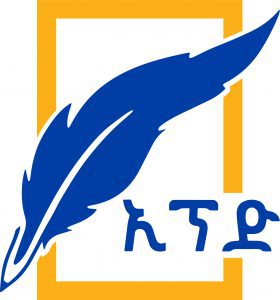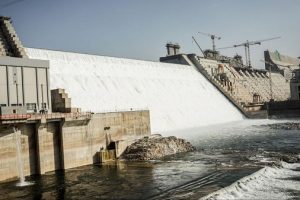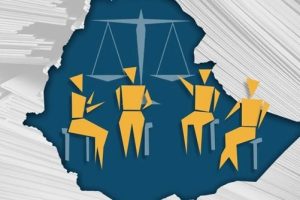The Pretoria peace deal signed in late 2022 between the Ethiopian federal government and the Tigray People’s Liberation Front (TPLF) marked a critical turning point in the years-long conflict that ravaged northern Ethiopia. It was an agreement that oiled the wheal skids toward peace, rebuilding a region scarred by war, displacement, and untold human suffering.
However, as Prime Minister Abiy Ahmed lately acknowledged in his recent address to the Ethiopian Parliament, the full realization of the Pretoria Agreement is far from being achieved. The challenges facing the implementation of the deal remain substantial, and there are still vital issues that need to be addressed to ensure lasting peace and stability in Tigray and across Ethiopia.
The peace deal laid out a comprehensive framework for addressing the many dimensions of the conflict. Its provisions focused on disarmament, demobilization, and reintegration (DDR) of former combatants, humanitarian aid, the restoration of basic services in Tigray, and the creation of conditions for elections in the region. However, as the two-year interim period under the Tigray Interim Administration (TIA) came to an end, it became evident that much of the work outlined in the agreement had not been fully realized. There had been progress, but significant gaps remained in key areas, and the task of achieving a full implementation was far from complete.
One of the key issues raised by the Ethiopian government, especially by Prime Minister Abiy Ahmed, is the need to extend the term of the interim administration in Tigray.
In his address to lawmakers, Abiy emphasized that the extension was necessary to complete the unfinished work outlined in the Pretoria agreement. This included vital tasks such as the DDR process, the restoration of security, and the preparation for elections. The Ethiopian government has underscored that while progress has been made in stabilizing the region, the work is not yet done. The extension of the interim administration’s term will allow for the continuation of these efforts, which are central to ensuring that the peace agreement can be fully realized.
The need for a year-long extension was driven by the recognition that critical components of the agreement, particularly the DDR process, had not been completed. The disarmament and demobilization of combatants, a central tenet of the agreement, was supposed to be an essential part of bringing peace and stability to Tigray. However, as Abiy noted in his speech, many challenges remain in fully implementing this process. Disarming former combatants and reintegrating them into society is a complex and multifaceted task that goes beyond simply taking weapons away. It requires addressing the psychological and social impacts of war on individuals, as well as providing economic opportunities and support for reintegration into communities. Failure to complete this process could undermine the stability of the region and leave the door open for further violence and unrest.
Beyond the DDR process, another critical issue that remains unresolved is the preparation for elections in Tigray. The interim administration had hoped to hold elections within its two-year mandate, but this goal has not yet been achieved. The failure to hold elections as planned is a significant setback in realizing the democratic aspirations of the people of Tigray. Elections are not just a political event; they are an essential part of the peace process, as they provide a mechanism for the people of Tigray to shape their political future. Without elections, the region risks being locked in a state of political uncertainty, which could undermine the fragile peace that has been established.
The situation is further complicated by the ongoing challenges posed by some political factions within Tigray. These groups have, under the guise of political opposition, sought to derail the peace process and prevent the full implementation of the Pretoria agreement. They have argued against the disarmament process, claiming that it would leave Tigray vulnerable and unable to defend itself. These factions have also criticized the Ethiopian government for its role in the peace process, accusing it of undermining the region’s sovereignty. Unfortunately, their actions have contributed to instability and violence, further complicating the efforts to stabilize the region.
The government’s position, as articulated by Prime Minister Abiy, is clear: the peace process must continue, and the Pretoria agreement must be fully implemented. The government has expressed its commitment to ensuring that the agreement’s provisions are carried out, despite the setbacks and challenges. The extension of the Tigray Interim Administration’s mandate is a testament to this commitment. Abiy’s remarks also emphasized the government’s determination to create a secure and stable environment for the people of Tigray, one that will allow for the return of displaced persons, the rebuilding of infrastructure, and the restoration of basic services. The government, in collaboration with the international community, must continue to work to ensure that peace is maintained and that the region does not fall back into conflict due to the actions of hawkish factions.
The international community has also played a key role in supporting the peace process. The Pretoria peace agreement was a product of diplomatic efforts from international actors, including the African Union, the United States, and others who helped mediate the negotiations. Continued support from these international partners is crucial in ensuring that the peace process stays on track. This support should include providing humanitarian aid, helping with the reconstruction of Tigray, and offering technical expertise in areas such as DDR and election preparation. The international community must also remain vigilant and hold all parties accountable for fulfilling their commitments under the peace agreement.
While the situation remains fragile, there are signs of progress. Humanitarian aid has begun flowing more freely into Tigray, essential services have been restored in many parts of the region, and there have been reductions in the levels of violence. These efforts are commendable, but they must be sustained and expanded. The people of Tigray have suffered greatly during the conflict, and they deserve the opportunity to rebuild their lives and communities. This can only happen if the provisions of the Pretoria peace agreement are fully implemented, and if all political factions within Tigray and Ethiopia at large work together to achieve lasting peace.
The path to peace is never easy, and the challenges are many. However, the Ethiopian government’s commitment to the Pretoria peace agreement, as outlined by Prime Minister Abiy Ahmed, offers a roadmap for realizing a peaceful and stable future for Tigray. The extension of the Tigray Interim Administration’s term provides an opportunity to complete the necessary work to fulfill the agreement’s objectives. If the government, the people of Tigray, and the international community remain committed to this process, it is possible to achieve the lasting peace and reconciliation that the region so desperately needs.
Ultimately, the full realization of the Pretoria peace agreement is not just about addressing the immediate concerns of disarmament and elections; it is about building a foundation for a stable and peaceful future for all Ethiopians. The people of Tigray, after enduring decades of war and conflict, deserve to live in peace and to have a political system that reflects their aspirations. It is the responsibility of all parties involved to ensure that this vision becomes a reality. Only through sustained effort, cooperation, and commitment can Ethiopia overcome its past and build a brighter future for all its citizens.
BY STAFF REPORTER
THE ETHIOPIAN HERALD SUNDAY EDITION 30 MARCH 2025



